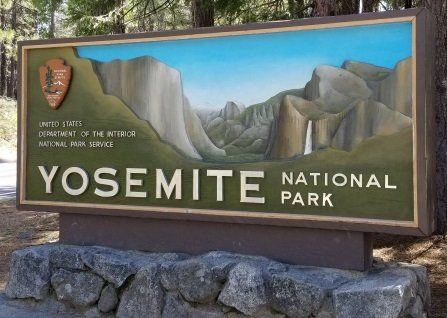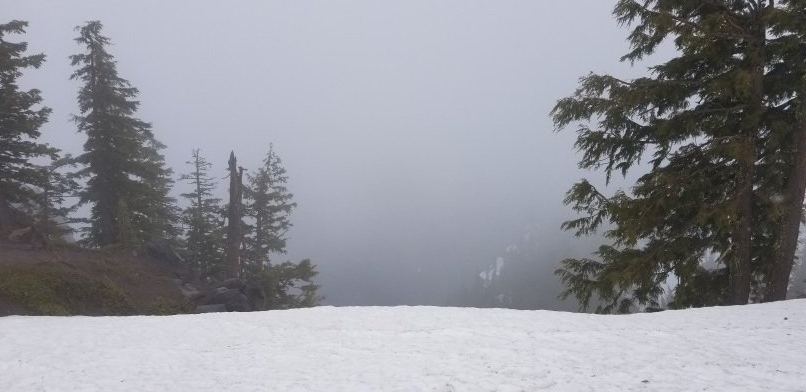In the list of top 10 deepest lakes in the world, Crater Lake is pretty cool for several reasons. In addition to this lake being in a volcanic caldera (a crater-like hole that forms after a volcanic eruptions leave the ground deep underneath unstable and unsupported).
It's also a lake with no connected sources (streams, etc). So that makes it crystal clear. Interestingly, there's actually a way to measure the clarity of a body of water: the Secchi disk:
This black and white disk is lowered down into the water and the furthest depth where it can still be visibly seen is recorded (sounds slightly subjective, but I guess it still gets the job done).
The theoretical maximum depth possible in pure water is stated to be between 230-260 ft.
Crater Lake's record is 175 ft, recorded in 1997. Not bad. And not far from the world record, measured in the Atlantic ocean (217ft recorded in 1972).
Also interestingly, the low end of the record, with the shortest recorded depth on the Secchi disk ('murkiest' water), is not very far away from Crater Lake. Itwas measured at Spirit Lake near Mt St Helens, a couple years after it's eruption in 1980. The disk could not be seen after lowering only about half an inch, due to the black deposits leached into the water from decaying trees.
The Visitor Center had a large 3D Map on display that really gave you a good sense of the landscape, and your location relative to the lake and points of interest:
I really appreciated the visual information. I think more tourist destinations can benefit from having something like this. Even 2D maps take longer to read and process into memory at a glance, compared to something like this.
The first time we arrived at Crater Lake, it was
overcast and, unbeknownst to us, we had about 20 minutes to take
pictures before the weather would prevent us from taking any more.
... ♫
Send in the clouds♫ ...
We are definitely discovering a pattern in national parks, in that some are best visited during very narrow windows of the calendar. It is quite obvious and I feel somewhat dull for not planning for it in the beginning, but higher elevation areas (Like Crater Lake, Lassen, etc) take longer to get winter out of their system...
Arguably the most awesome place to be in the park would be on Wizard Island. It's actually a cinder cone that formed around the same time as the caldera the lake is based in.
The park service takes boat tour trips to the island, but alas, only in the later summer months. Apparently they drop you off and you can trek around the whole 'island' for most of the day if you wanted to. But they send one last boat before night time to round everyone up - no camping or overnight stays are allowed.
It's interesting that the top of the cinder cone may have more recent volcanic activity (not sure if it spews any hot rocks or lava, or perhaps just steam or gas?) that seems to prevent the trees from staying alive up there:
I'm learning that national parks, just like any other park or hiking trail, are places that you will want to repeatedly come back and visit. Different times of the year, along with different itineraries, make it a place you can never really 'consume' in just one visit. There's many places you can visit where, once you've been there, you get the feeling that you've seen it all, you can 'check it off the list', and there's not much point to ever returning. Not so with the national parks.
I suppose that holds true for any place that people can appreciate. Someone who is really into appreciating art could probably go visit the Louvre in Paris, and see the same painting or sculpture hundreds of times, and not lose interest. Perhaps everyone feels the same way about their own interests (you can never get tired of visiting), and the same way about things they are not interested in ("eh, once you've been there you've kind of seen it all")...

















